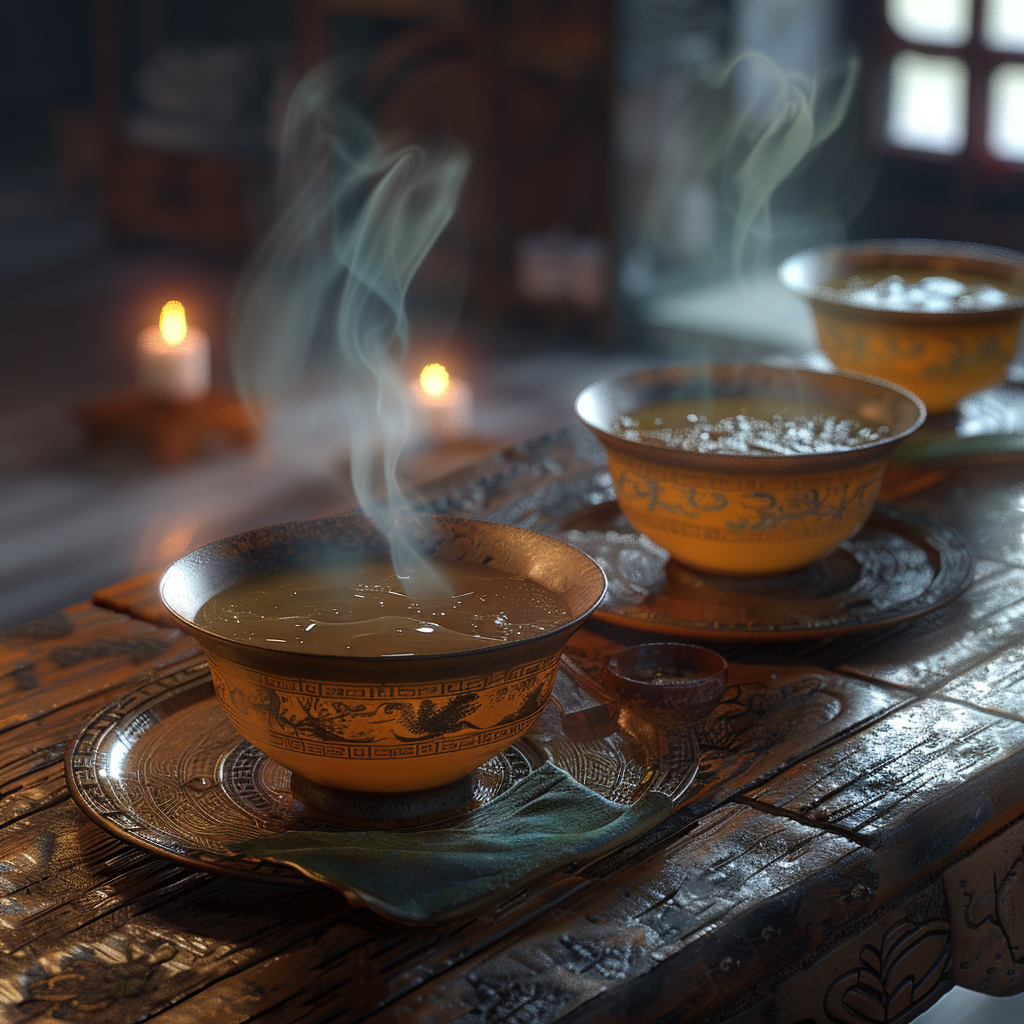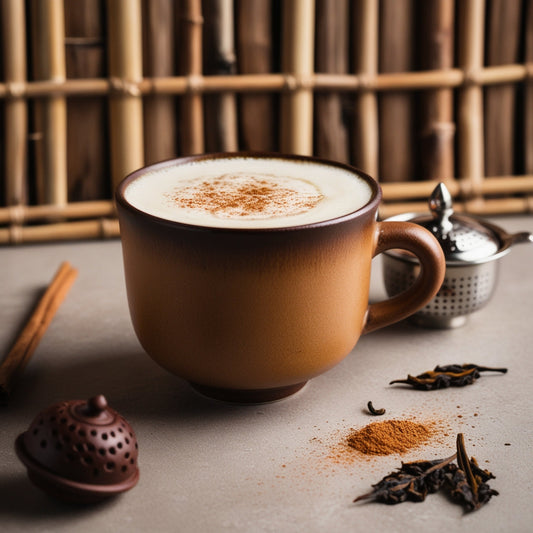Overview
What is traditional Chinese Tea?
This article delves into the rich tapestry of Chinese tea, exploring its deep historical roots and the broad spectrum of flavors and traditions it encompasses. From the legendary origins with Emperor Shennong to the global tea tables of today, Chinese tea offers a blend of cultural significance, health benefits, and ceremonial practices.
Additonally, we will explore the different types of Chinese tea, their unique brewing methods, and the cultural rituals that enhance their enjoyment. Thus, the article highlights the health benefits associated with regular tea consumption and discusses how Chinese tea continues to influence tea cultures around the world.
Table of Content
- Introduction
- The Rich History
- Varieties
- Brewing and Enjoying Chinese Tea
- The Cultural Significance
- Health Benefits
- Tea Ceremonies: Bridging Tradition and Mindfulness
- Modern Tea Culture in China
- Global Influence
- Conclusion
Introduction
Chinese tea has a storied history, tracing back over four thousand years. Originally discovered by Emperor Shennong, tea has woven its way through China's cultural, social, and medicinal history. Moreover, Over the centuries, it evolved from a medicinal herb to a daily beverage and a symbol of status within society.
The Rich History
Tea's development in Chinese society has been transformative. From ancient medicinal uses to becoming a symbol of status, each historical period added depth to its rich tradition. Figures like Lu Yu in the Tang Dynasty significantly contributed to tea culture with his work, "The Tea Classic," which detailed the intricacies of tea cultivation and preparation. By the Song Dynasty, tea had become a major economic commodity.
Varieties
First, green tea undergoes minimal oxidation, preserving its natural antioxidants.
Next, black tea is fully fermented, resulting in a bold flavor.
Oolong tea falls between these two, partially oxidized for a balanced taste.
Then there's white tea, made from young buds and leaves, offering a delicate flavor.
Yellow tea, less common, involves a unique process that imparts a subtle, mellow taste.
Finally, dark tea, like Pu-erh, is post-fermented, developing complex flavors over time.
Each type brings its own health benefits. For instance, green tea boosts metabolism, while oolong may aid digestion. The various processing methods create a diverse range of flavors and aromas, catering to different palates and preferences.

Brewing and Enjoying Chinese Tea
Mastering the art of brewing Chinese tea enhances its flavors and health benefits. Specific temperatures and brewing times are crucial for the perfect cup. Furthermore, The Gongfu Tea Ceremony, a traditional Chinese tea ritual, highlights the cultural reverence for tea. It emphasizes precision and mindfulness in tea preparation and consumption.
Cultural Significance
Tea is a central element in Chinese social and ceremonial life, symbolizing respect and hospitality. It features in festivals and family gatherings, where serving tea expresses respect and goodwill. In addition, Daily tea drinking reflects the Chinese philosophy that emphasizes tranquility and joy in life's simple pleasures. This practice bridges China's rich cultural heritage with modern lifestyle.
Health Benefits
This tea is not only a cultural icon but also a boon for health. Various types offer specific benefits due to their unique chemical compositions.
For instance, green tea and oolong tea are renowned for aiding in weight loss and boosting metabolism. The antioxidants found in these teas, such as catechins and polyphenols, help reduce the risk of chronic diseases including heart disease and diabetes.
Moreover, studies suggest that regular consumption of tea can enhance bone density and reduce the risk of fractures, making it a valuable addition to a daily diet for maintaining overall health.
Tea Ceremonies: Bridging Tradition and Mindfulness
The Chinese tea ceremony, known as Gongfu Cha, is a profound cultural practice that showcases the artistry and philosophical depth of the tea traditions. This ritual is not just about drinking tea, but about the appreciation of its aesthetic, flavor, and spiritual qualities.
It encourages a mindful approach to life, emphasizing tranquility and the enjoyment of the present moment. Through these ceremonies, participants can learn about the subtle nuances of tea, from its brewing to the proper way of sipping it, fostering a deeper connection with this ancient practice.
Modern Tea Culture in China
In contemporary China, tea remains a staple in daily life and social settings. Tea houses are popular spots where people of all ages meet to relax, converse, and enjoy tea. These venues serve as cultural hubs, reflecting the enduring significance of tea in Chinese society. The practice of drinking tea daily, whether at home or in tea houses, is a testament to its ingrained role in fostering community and social interaction.

Global Influence
This tea has crossed borders and become beloved worldwide. Hence, Its journey from China to the global stage involves intricate cultural exchanges and adaptations. Today, it can be found in various forms across different cultures, adapting to local tastes while retaining its intrinsic qualities. This global spread underscores the versatility and enduring appeal of Chinese tea, making it a global beverage of choice for relaxation and health.
Conclusion
Dive into the rich heritage and diverse flavors of Chinese tea with Puerh Craft. Each variety, from the soothing Oolong to the robust Pu-erh, offers unique stories and health benefits. Whether you're a tea enthusiast or a newcomer, our curated selection connects you to centuries of tradition and wellness.
Explore authentic Chinese teas at Puerh Craft and transform your tea drinking into a ritual that celebrates the art of living well. Join us now and start your journey with every cup!
Q&A Section
Q1: What are the main types of Chinese tea?
A1: Chinese tea is classified into six main types: Green, Black, Oolong, White, Yellow, and Dark tea. Each type is defined by its unique processing techniques and the part of the plant used, offering a variety of flavors and health benefits.
Q2: How did tea originate in China?
A2: Tea is believed to have been discovered by the legendary Emperor Shennong around 2737 BC. According to legend, dried leaves from a nearby bush fell into boiling water he was preparing, creating the first tea.
Q3: What is the significance of the Chinese tea ceremony?
A3: The Chinese tea ceremony, or Gongfu Tea Ceremony, is a ritual that showcases the artistry and philosophical depth of this tea traditions. It emphasizes mindfulness, precision in tea preparation, and savoring the flavor, fostering a deeper appreciation for tea.
Q4: Can drinking Chinese tea have health benefits?
A4: Yes, It contains various beneficial components such as antioxidants and polyphenols. Regular consumption can help in weight loss, improve bone density, reduce the risk of cardiovascular diseases, and offer anti-radiation benefits.
Q5: How has Chinese tea influenced global tea culture?
A5: It has greatly influenced global tea culture through its diverse types and rich ceremonial practices. It has been adopted and adapted in various cultures around the world, often blending local traditions with the classic Chinese methods.
Q6: What are some tips for brewing Chinese tea?
A6: To fully enjoy Chinese tea, use water at the correct temperature for the type of tea being brewed and allow the right steeping time. Each type of tea may require different temperatures and brewing times to bring out its best flavor.






